Svetlana Viktorovna Politova, chemistry teacher at State Budgetary Educational Institution Secondary School No. 1352 with in-depth study of the English language in Moscow.
Lesson summary.
Subject: Bodies, substances, particles.
Teacher: Politova Svetlana Viktorovna.
Lesson type: learning new material.
Lesson duration: 45 minutes.
Lesson objectives:
Form the concept of body, substance, particle, teach to distinguish substances according to their characteristics and properties.
Introduce children to the concepts of body, matter, particle.
Teach to distinguish substances in different states of aggregation.
Introduce the concept of mixtures and pure substances.
Test students' knowledge on the topic covered.
Develop memory and thinking.
Improve self-esteem and self-control skills.
Increase the psychological comfort of the lesson, relieve muscle tension (dynamic pauses, change of activities).
Form friendly relationships in the team.
Cultivate interest in the world around you.
Equipment:
1. Multimedia interactive presentation.
1. Drawings (solid, liquid, gaseous substances).
2. Metal ruler, rubber ball, wooden cube (from the teacher).
3. For the experiment: glass, teaspoon, piece of sugar; boiled water (on children's tables).
During the classes
Organizing time
The teacher welcomes the children, checks their readiness for the lesson, addressing the students: “Today you will complete all tasks in groups. Let’s review the rules of working in a group” (slide No. 2).
Treatment of comrades - “politeness”;
Opinion of others - “learn to listen, prove your point of view”;
Working with sources of information (dictionary, book) - highlight the main thing.
Learning new material
Setting a learning goal: today we are starting to study the topic “This Amazing Nature” - we will take a virtual excursion (slide No. 3). The slide shows pictures:
water drop
sugar bowl
(storage container)
wave (water)
The teacher asks the question “Did all the words allow you to accurately represent the subject?”
Those words that accurately help to represent an object, namely, have outlines and shapes, are called bodies. What these objects are made of are called substances.
Working with a source of information (dictionary by S.I. Ozhegov):
The body is a separate object
in space, as well as a part of space filled with matter, some substance...
Body - the human or animal organism in its external, physical forms.
The body is a part of the organism...
Body is the main part, the body of something.
Write down the definition in your notebook: “Those objects that surround us are called bodies"(slide number 4).
Slide No. 5. The teacher invites students to compare the pictures located on the slide: a rubber ball, an envelope, a wooden cube.
Task 1: find the commonality. All bodies have size, shape, etc.
Task 2: identify the main characteristics of bodies. Answer on slide number 6: control button “answer 2”.
Slide number 6. Pictures are triggers. The ball is round, rubber, bright. Envelope – rectangular, paper, white. The cube is wooden, large, beige.
Together with the guys we conclude: “Every body has a size, shape, color.” We write it down in a notebook.
Slide number 7. What is nature? Choose the correct answer from three answer options:
Anything made by human hands
Everything that surrounds us
Everything that surrounds us and exists independently of man
Slide number 8 – working with cards. Students have cards with pictures of bodies (objects) on their desks. We invite students to divide the pictures into two groups: table, sun, tree, pencil, cloud, stone, books, chair. Make a note in your notebook. We ask students to read the names of the bodies, this will be group 1. On what basis did they place the words in this group? We do the same with the second group.
Correct answer:
Artificial
Natural
pencil
We draw a conclusion. How we divided the words (by what principle?): There are bodies that are created by nature, and there are those that are created by human hands.
We draw up the block in a notebook.

Slide number 9. “Interactive feed” technique. The slide shows natural and artificial bodies. Using the scroll button, which is also a trigger, we look through natural and artificial bodies (each time you press the button, the grouped pictures change).
We consolidate the acquired knowledge with the help of the game “Traffic Light” (slides 10-12). The game is about finding the correct answer.
Slide 10. Task: find natural bodies. From the proposed bodies on the slide, you must select only natural bodies. The picture is a trigger - when pressed, a traffic light signal (red or green) appears. Sound files help students ensure they have chosen the correct answer.
Flowers
Bird
Slide 11. Task: find artificial bodies.
Bed
Hat
Bag
Slide number 12. Task: find artificial bodies.
Alarm
Car
Teacher. Let us remember what we talked about at the beginning. We found it difficult to accurately determine whether metal, water, and clay are bodies and came to the conclusion that they do not have exact outlines or shapes, and therefore are not bodies. We call these words substances. All bodies are made of substances. Write down the definition in your notebook.
Slide 13. On this slide we will look at two examples.
Example 1: scissors - body, what they are made of - substance (iron).
Example 2: drops of water are bodies, the substance of which the drops are made is water.
Slide number 14. Let's consider bodies that consist of several substances. For example, a pencil and a magnifying glass. On the slide we look separately at the substances that make up a pencil. To demonstrate, click on the control buttons: “graphite”, “rubber”, “wood”. In order to remove unnecessary information, press the cross.
Let's consider what substances the magnifying glass consists of. We press the triggers “glass”, “wood”, “metal”.
Slide No. 15. To reinforce this, let’s look at two more examples. What is a hammer made of? The hammer consists of iron and wood (handle). What are knives made of? Knives are made of iron and wood.
Slide number 16. Consider two objects that consist of several substances. Meat grinder: made of iron and wood. Sled: made of iron and wood.
Slide 17. We conclude: bodies can consist of one substance, or they can consist of several.
Slides 18, 19, 20. “Interactive feed” technique. We show it to the students. One substance can be part of several bodies.
Slide 18. Substances consist entirely or partially of glass.
Slide 19. Substances consist entirely or partially of metal.
Slide 20. Substances consist entirely or partially of plastic.
Slide 21. The teacher asks the question “Are all substances the same?”
On the slide, click the “Start” control button. Notebook entry: all substances consist of tiny invisible particles. We introduce a classification of substances according to their state of aggregation: liquid, solid, gaseous. The slide uses triggers (arrows). When you click on the arrow, you can see a picture of particles in a given state of aggregation. Click on the arrow again and the objects will disappear.
Slide 22. Experimental part. It is necessary to prove that the particles are tiny, invisible to the eye, but retaining the properties of the substance.
Let's do an experiment. On the students’ desks are trays with a set of simple laboratory equipment:
beaker (can be replaced with any small container beaker),
stirring spoon,
napkin,
a piece of sugar.
Place a piece of sugar in a glass and stir until completely dissolved. What are we seeing? The solution has become homogeneous, we no longer see a piece of sugar in a glass of water. Prove that there is still sugar in the glass. How? To taste. Sugar: a white substance that tastes sweet. Conclusion: after dissolution, sugar did not cease to be sugar, because it remained sweet. This means that sugar consists of tiny particles invisible to the eye (molecules).
Slide 23. Let's consider the arrangement of particles in substances with a solid state of aggregation. We demonstrate the location of particles and matter (examples) using the “interactive tape” technique - the scroll button allows you to show the pictures the required number of times. We write down the conclusion in our notebook: in solids, particles are located close to each other.
Slide 24. Arrangement of particles in liquid substances. In liquid substances, particles are located at some distance from each other.
Slide No. 25. The arrangement of particles in gaseous substances: the particles are located far from each other, the distance between them significantly exceeds the particle size itself.
Slide 31. It's time to sum up. Together with the teacher, they remember what new things they learned in the lesson. The teacher asks questions:
Everything that surrounds us is called... bodies
There are bodies natural And artificial .
Write down the diagram in your notebook. Teacher: Let's look at the diagram. Bodies can be natural and artificial, substances can be solid, liquid, gaseous. Substances are made up of particles. The particle retains the properties of the substance (remember that sugar remained sweet when dissolved). The slide uses triggers. Click on the “Body” shape, arrows appear, then shapes labeled “Artificial” and “Natural”. When you click on a substance figure, three arrows appear (liquid, solid, gaseous).
Slide number 30. Fill out the table. Read the instructions carefully.
(Please mark with " + "in the appropriate column, which of the listed substances are solid, liquid, gaseous).
Substance
Solid
Liquid
Gaseous
Natural gas
Aluminum
Carbon dioxide
Checking the progress of the work (slide 30). (Children take turns naming the substance and explaining which group it belongs to).
Physical exercise.
When organizing education in primary school, many factors must be taken into account, but above all, it is necessary to strive to create a learning environment that promotes health. During the lesson, you can use physical education minutes, thus avoiding long, continuous sitting at a desk.
In this lesson, you can use two physical exercises of the teacher’s choice (to do this, as soon as the children are tired, you need to go to slide No. 2 - select one of the physical exercises, follow the hyperlink to the desired presentation slide). The first physical minute (slide 34, the second - slide number 35).
Slide number 34. Physical exercise.
Leaves
We are autumn leaves
We are sitting on the branches.
The wind blew and they flew.
We were flying, we were flying
And they sat down quietly on the ground.
The wind came again
And he picked up all the leaves.
Spun and flew
And they sat down quietly on the ground.
Slide number 35. Physical exercise.
Rain
The rain clouds have arrived:
Rain, rain, rain!
(Palms down, shake hands.)
The raindrops are dancing as if alive:
Drink, rye, drink!
(Palms up, shake hands)
And the rye, bending towards the green earth,
Drinks, drinks, drinks.
And the warm rain is restless
It's pouring, pouring, pouring!
(Hands palms down, shake hands.)
Lesson summary
1) Summing up
You worked together.
Let's find out which team was the most attentive in the lesson. The teacher asks the question: “What is a body called, what characterizes a body, give an example.” Students answer. Everything that surrounds us is called bodies. What types of bodies are there based on their state of aggregation: liquid, solid, gaseous. What do substances consist of? Give examples of how particles retain the properties of substances. For example, if we add salt to soup, how do we know that the properties of the substance have been preserved? To taste. Fill out the diagram.

Discuss what you agree with and what you disagree with.
What new did you learn? Children report. ( All objects surrounding us are called bodies. Bodies are made up of substances. Substances are made from particles).
Homework.
The teacher tells the children their homework:
solve a short test (optional),
view the presentation “Interesting facts about water” (see appendix). In the presentation you can get acquainted with six known facts about water. Think, guys, why do you need to get to know this substance better? Answer: the most common substance on Earth. What other substance would you like to invite to your place (creating virtual excursions).
study the electronic textbook (see appendix).
Note: the teacher can additionally use slides 3 32, 33, 36.
Slide number 32. Task: test yourself. Find products (interactive test).
Slide number 33. Task: test yourself. Find living and inanimate bodies (interactive test).
Slide No. 36. Task: divide bodies into bodies of animate and inanimate nature (interactive test).
Literature:
Gribov P.D. how a person explores, studies, uses nature. 2-3 grades. Volgograd: Teacher, 2004.-64 p.
Maksimova T.N. Lesson developments for the course “The World around us”: 2nd grade. - M.: VAKO, 2012.-336 p. - (To help the school teacher).
Reshetnikova G.N., Strelnikov N.I. The world. Grade 3: entertaining materials. - Volgograd: Teacher, 2008. - 264 pp.: ill.
Tikhomirova E.M. Tests on the subject “The world around us”: 2nd grade: for the educational set A.A. Pleshakov “The world around us. 2nd grade." - M.: Publishing house "Exam", 2011. - 22 p.
Lesson summary on the topic “Bodies, substances, particles.
Practical work No. 1 " Bodies, substances, particles»»
Subject: environment
A.A. Pleshakov
Lesson objectives:
Get acquainted with the concepts of “body”, “matter”, “particles”. Learn to find differences between bodies (natural and artificial, living and nonliving), substances, particles
Lesson objectives:
Formation of research skills through conducting experiments on the dissolution of substances in water and the expansion of bodies when heated, through working with diagrams.
To promote the development of the ability to analyze, generalize, draw conclusions, and develop logical thinking;
Continue the formation of a scientific worldview, the ability to organize individual and collective educational work.
Planned educational results (personal, meta-subject, subject):
Subject: Explain meanings of words: “body”, “substance”, “particle”. Distinguish bodies and substances. classify bodies and substances, give examples of natural and artificial bodies, solid, liquid and gaseous substances; observe the experiment with the dissolution of substances, the experiment with the expansion of bodies when heated. Model the processes of dissolution and heating, as well as the arrangement of particles in solid, liquid and gaseous substances.
Personal: 1) formation of a respectful attitude towards other opinions;
2) acceptance and mastery of the social role of the student;
3) development of independence and personal responsibility for one’s actions;
4) development of skills for cooperation with peers
Meta-subject: 1) mastering the ability to accept and maintain the goals and objectives of educational activities;
2) developing the ability to understand the reasons for the success (failure) of educational activities and the ability to act constructively even in situations of failure;
3) mastering the initial forms of cognitive and personal reflection
Equipment:
On the students' desks: signs with the names of bodies and substances, a glass of water, a plate, a spoon, sugar; test cards; textbooks; workbooks.
On the teacher’s demonstration table: a ball with a ring on a stand, dry alcohol, a glass of water, potassium permanganate, a basin of hot water, a 3-liter jar with a rubber glove;
Presentation for the lesson, computer, projector and screen.
Educational Resources:
A.A. Pleshakov. Textbook “The world around us, grade 3.” Part 1. Moscow “Enlightenment” 2012
A.A. Pleshakov. Workbook “The world around us, grade 3.” Part 1. Moscow “Enlightenment” 2014
Lesson plan:
1.Organizational stage.
2. Setting the goals and objectives of the lesson. Motivation for students' learning activities.
3. Updating knowledge
Teacher: Remember into what groups all subjects can be divided.
Students: ...
4. Studying new material: working with a textbook and handouts
Teacher: Open the textbook on page 36 and let's read what “bodies” are.
Student: Reads the first paragraph about bodies.
Teacher: Find words on your desks that represent bodies.
Students: name the words.
Teacher: How do you think these bodies differ? What groups can they be divided into?
Students: put forward their hypotheses.
Teacher: let's test your hypotheses in the textbook (p. 36)... So, all bodies can be divided into natural (bodies of nature) and artificial (bodies created by human hands). Natural bodies are divided into two groups: objects of living and inanimate nature. Now let’s read what “substances” are.
Students: take turns reading the text on page 37.
Teacher: Find on your desks the words that denote substances.
Students: name the words.
5. Initial check of understanding - working with the presentation:
Teacher: One of the 3rd grade students decided to present the material we had studied in the form of diagrams, but made mistakes. Let's try to find these errors.
6. Studying new material - experimental stageTeacher: Why do substances differ from each other? For example, water is clear and milk is white; the nail is difficult to break, and we can easily pour water from one container to another. Do substances have an “inner world”?
Student:…
Teacher: Let's conduct experiments and try to explain them.
Experience 1(front): dissolving sugar in water.
Students: ...
Experience 2(demonstration): Dissolving potassium permanganate in water.
Teacher: What are we observing? Why might this happen?
Students: ...
Experience 3(demonstration): Expansion of a metal ball when heated (before heating, the ball passes through the ring, but after heating it does not pass).
Teacher: What are we observing? Why might this happen?
Students: ...
Teacher: Liquids also expand when heated. In everyday life, it is necessary to take into account the expansion of bodies when heated. For example, you cannot put a pan on the fire if it is completely filled with water.
Experience 4(demonstration): Expansion of air in a 3-liter jar (put a rubber glove on a 3-liter jar, lower the jar into a basin of hot water; when heated, the air in the jar expands and the glove rises).
Teacher: What are we observing? Why might this happen?
Students: ...
Teacher: So, we can conclude that substances consist of particles. There are gaps between particles.
7. Studying new material - working with a presentation
Teacher: We don’t see particles of matter, so using the presentation, we will simulate the processes that we just observed.
8. Independent work in the workbook
Students complete tasks 1 and 2. After completing the tasks, the answers are checked with the teacher.
9. Primary consolidation.
Teacher: What did we learn in the lesson?
Students: Bodies are any objects.
Bodies are made up of substances.
Substances are made up of particles.
Substances can be in three states: solid, liquid and gaseous.
Teacher: Now we will check how well you have learned the new material you learned in the lesson. Take the test cards and answer 5 questions.
Students: take a 5-question test
Teacher: swap jobs with your desk neighbor and check their work.
Students check their work under the guidance of the teacher.
Teacher: Now give grades for the test you checked: 5 correct answers - grade “5”; 4 - “4”, 3 – “3”).
Students: give grades.
9. Reflection (summarizing the lesson)
Teacher: Who did it with an “5”? "4"? Well done. What did you like about the lesson?
Students: ...
Teacher: Thank you for your work. Goodbye.
Lesson type: combined
Target
— formation of a holistic picture of the world and awareness of a person’s place in it based on the unity of rational-scientific knowledge and the child’s emotional and value-based understanding of personal experience of communicating with people and nature;
Problem:
What is a body, substance, particle?
Tasks:
Distinguish between bodies, substances and particles,
Conduct experiments using laboratory equipment
Subject results
will learn
Characterize the concepts of “body”, “substance”, “particle”;
Distinguish between bodies and substances and classify them.
Universal educational activities (UUD)
Regulatory: adequately use speech to plan and regulate one’s activities; transform a practical task into a cognitive one.
Cognitive: pose and formulate problems, monitor and evaluate the process and result of activities (experience); transfer of information.
Communicative: cost a monologue, argue your position.
Personal results
Motivation for learning activities
Basic concepts and definitions
Bodies, substances, particles. Natural and artificial bodies. Solid, liquid, gaseous substances
Checking readiness to learn new material
Remember into what groups all the objects that surround us can be divided.
Consider the diagram. What two groups can bodies be divided into? Give examples of bodies from each group.
Learning new material
Any object, any living creature can be called a body. A stone, a lump of sugar, a tree, a bird, a wire - these are bodies. It is impossible to list all the bodies; there are countless of them. The sun, planets, and the moon are also bodies. They are called celestial bodies
SUBSTANCES
Bodies are made up of substances. A piece of sugar is a body, and sugar itself is a substance. Aluminum wire is the body, aluminum is the substance.
There are bodies that are formed not by one, but by several or many substances. Living bodies have a very complex composition. For example, plants contain water, sugar, starch and other substances. The bodies of animals and humans are formed by many different substances.
So, substances are what bodies are made of.
Distinguish solid, liquid And gaseous substances. Sugar and aluminum are examples of solids. Water is a liquid substance. Air consists of several gaseous substances (gases).
BodiesAndsubstances
Bodies. Substances
Experience. Fromwhatconsistsubstances
Threestatesubstances
PARTICLES
Experience. Let's take a body formed by one substance - a piece of sugar. Place it in a glass of water and stir. At first the sugar is clearly visible, but gradually becomes invisible. Let's taste the liquid. She's sweet. This means that the sugar did not disappear, it remained in the glass. Why don't we see him? Make a guess.
A piece of sugar disintegrated into the smallest particles, invisible to the eye, of which it consisted (dissolved), and these particles mixed with particles of water.
Conclusion: experience proves that substances, and therefore bodies, consist of particles.
Each substance consists of special particles that differ in size and shape from the particles of other substances.
Scientists have found that there are gaps between particles. In solids these gaps are very small, in liquids they are larger, in gases they are even larger. In any substance, all particles are constantly moving.


Comprehension and understanding of acquired knowledge
Presentation "Bodies, substances, molecules"
BodiesAndsubstancesaroundus
1.Check with your textbook whether the statements below are true.
Any object, any living creature can be called a body.
Substances are what bodies are made of.
2. Select bodies from the list first, then substances. Test yourself on the Self-Test Pages.
Horseshoe, glass, iron, brick, sugar, watermelon, salt, starch, stone.
3.Using a model, show the process of dissolving a piece of sugar in water.
4. Using models, depict the arrangement of particles in solid, liquid, and gaseous substances.
Independent application of knowledge
What are bodies called? Give examples.
What are substances? Give examples. 3. What do substances consist of? How to prove this? 4. What can you tell us about particles?
Homework. Write in the dictionary: body, substance, particle.
Information sources:
A. A. Pleshakov textbook, workbook The world around us, grade 3 Moscow
"Enlightenment" 2014
Presentation hosting the world
This presentation was prepared for a geography lesson in the 8th grade and is dedicated to the topic: “Physical and geographical position of Russia.” During the lesson, students will become familiar with the concept of “physical-geographical location”, “enclave” and will be able to recognize the extreme points and borders of Russia.

Presentation for a geography lesson “Diversity and patterns of soil distribution.”
The material contains a presentation for a geography lesson in grade 8 on the section “Soils and soil resources.” The goal is to familiarize students with the patterns of soil distribution on the territory of Russia. It is proposed to fill out the table as the material is explained.

Presentation for a geography lesson “Atmospheric fronts, cyclones, anticyclones”
The material contains a presentation for a geography lesson in grade 8 on the section “Climate and climate resources.” An idea of atmospheric fronts, cyclones, and anticyclones is given. It is proposed to fill out the table as the material is explained. Consolidation is carried out using texts from fiction.

Abstract and presentation for the chemistry lesson “Oxidation-reduction reactions.”
The development is intended for eighth grade students on the topic “Oxidation-reduction reactions” (textbook by O.S. Gabrielyan. Chemistry. 8th grade). With the help of presentations, it is easier for students to learn the electronic balance method and comprehend the complex processes of oxidation and reduction.

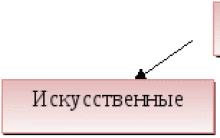
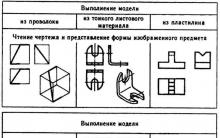
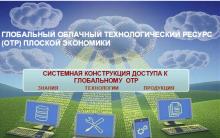
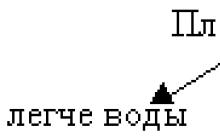
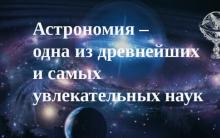
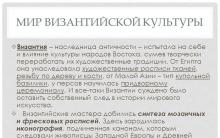




Best International Art Gallery
Chinese Pilot Jao Da
What does the budget classification of the Russian Federation include?
Minister of Finance of the Russian Federation Anton Siluanov
How to calculate mineral extraction tax for gas, sand, oil, coal (mineral extraction tax)?